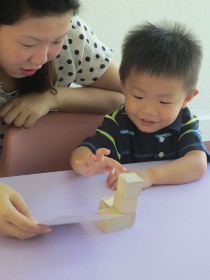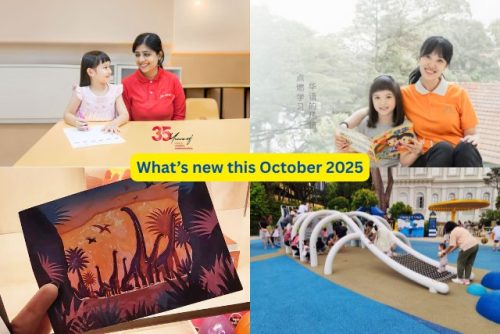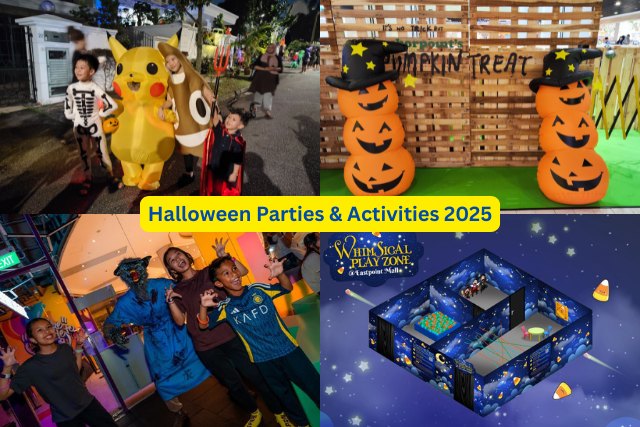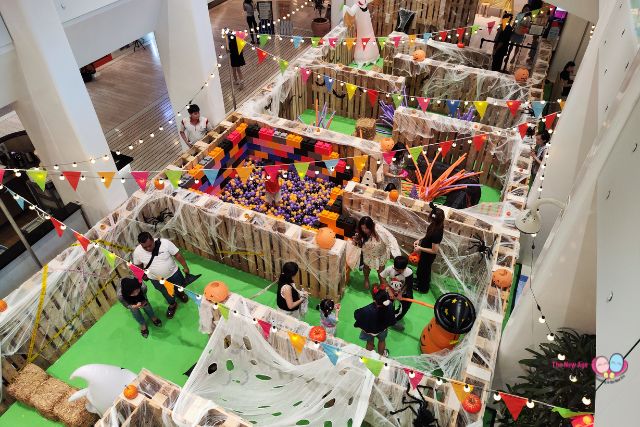Singapore is known to have one of the best Mathematics syllabus in our education system. However, many children still struggle to grasp mathematical concepts especially when they move on to the upper Primary Level. Michelle Ang spoke to NeuroMath founder, Norman Tien. He shares his insight with us on the common misconceptions parents have about how children learn mathematics, and tells us more on the important skills children should develop in order to excel in Math.

TNAP: What are some common misconceptions parents have about children learning Mathematics?
The first misconception parents have is “Practice by drilling is key for my child to excel in Mathematic”. However, drilling not only leads to loss of interest when done excessively, it also causes a child to form a negative habit of reading. A child will tend to ‘scan’ through the questions instead of reading the question, when the same worksheet is used repeatedly. Careless mistakes of not answering to what the question is asking for will be formed eventually.
For example: A child gives the number of boys when actually, the question asked for the number of girls. This was formed because the child scans through a question when he/she feels that the question is similar to a question he/she has done some time ago.
The second misconception is “Mathematics is mainly about the 4 main operations – namely addition, subtraction, multiplication and division”. Mathematics is more than the 4 operations. Skills like logic reasoning, critical thinking, visual perception, concentration, as well as language are inclusive too.
The third misconception is “My child learns the same way as I learn”. This is a common mistake most parents will make. This leads to a challenge termed as Teachers/Parents’ Teaching style and Child’s Learning style mismatch.
To begin with, there are 3 primary types of learners, Visual, Auditory and Kinesthetic. Visual learner learns through sight, auditory through sound while kinesthetic through movement. How a parent learns, and thus teach, might not be equal to how a child learns. For example: To learn multiplication, the followings are how different types of learners learn, for best retention.
Visual learner: Flash cards showing 1 x 4 = 4, 2 x 4 = 8 ….
Auditory learner: Reciting 1 x 4 = 4, 2 x 4 = 8 ……
Kinesthetic learner: Unfolding finger one and say 4, finger two and say 8 ….
If an auditory parent is teaching a kinesthetic child, parents will teach the child the multiplication tables by reciting. Despite numerous practices done by the child to recite the tables, the retention will never be as strong as when the child is taught using the kinesthetic approach.
TNAP: In your opinion, what are the 3 most important skills children need to have when it comes to learning Maths and why?
The three skills I believe are most important for children to develop are logical reasoning, perceptual knowledge and motor skills.
First skill: Logical reasoning cognitive skills
Simple tasks like grouping objects by shapes, colours or weight can help develop logic reasoning skills. Game like mahjong is also built from the basis of set forming or grouping.
Example: A visual question showing a weighing scale with a rectangle on the left side and a square on the right, with the scale leaning towards the square, a child should be able to tell that the square is heavier.
Another question shows 2 scales and 3 objects. Scale 1 with a triangle and a circle on each side, leaning towards the circle. Scale 2 with a circle and a square on each side, leaning towards the square. A child should be able to exercise his/her logic reasoning skills to decide which object is heavier.
This skill is important, especially when tackling questions of higher level of difficulty (normally with more variables and more conditions to meet)
Second Skill: Perceptual cognitive skills
Simple tasks like playing with cube blocks, lego, origami and jigsaw puzzles can help develop visual/spatial perceptual skills.
For example: Being able to visualize the 3D object from a 2D diagram, and to carry out tasks like rotation and reflection are critical, especially when learning the topic geometry.
Third Skill: Motor skills
Simple tasks like cutting with scissors, using clothe pegs can help develop fine motor skills.
For example: A child with strong motor skills will tend to be able to write and draw better. When combined with visual skills, a child with strong motor skills will be able to represent complex problem sums by drawing multiple proportionate models and be able to compare and thus solve using these models.
TNAP: Route learning versus play-based learning. Why is the latter learning style much more preferred in your centre?
Play based learning allows children to learn by doing in a purposeful way. These motivated practices and activities enable them to develop Mathematical concepts and skills. Games designed will be based on everyday objects and experiences that equip children to develop critical thinking skills. Therefore, children are also able to apply Mathematical knowledge in real life situations.

TNAP: When children enter Primary 1, much of the learning style is based in practice by drilling the child with worksheets. Will the child be able to adapt to this if they have learned Math in a play-based approach in their preschool year? How so?
As our NJR (NeuroMath Junior) curriculum is based on structured and spiral approach of learning, children who graduate from our programme will have a strong foundation for Mathematical concepts and skills. Having equipped with such skills through concrete experiences, children will be able to do the worksheets because they have acquired the knowledge to understand the abstract concepts.
TNAP: Based on your experience, what are the topics children struggle with before going to Primary 1?
Whole numbers and measurement.
TNAP: Any possible cause for this?
Whole numbers – due to incomplete mastery of basic number facts, incompetent arithmetic computations and poor command of English Language. Measurement – due to the lack of understanding of conversion.
TNAP: Is there a way to overcome it or prevent it and if so, what can parents do?
Yes, there is. Parents can use number line and counters to develop number concepts, read Mathematics related stories and carry out hands-on activities (e.g. Use 2 weighing scales with different calibrations to weigh an item or use different containers to measure volume).
TNAP: Any advice on how can parents can instil a love for math in children?
Introduce Mathematics using everyday objects and let children learn math concepts and skills by doing meaningful and engaging activities, activities that can bring out the logic behind.
For example: A 4 year old can learn mathematical signs like > or < and = if the lesson is carried out using a meaningful activity.
Although the learning of these signs is meant for secondary levels only, some secondary students still struggle as they see these signs as abstracts and thus will need to rely on memory to remember them.
This article was first published in The New Age Parents e-magazine.
* * * * *
Like what you see here? Get parenting tips and stories straight to your inbox! Join our mailing list here.
Want to be heard 👂 and seen 👀 by over 100,000 parents in Singapore? We can help! Leave your contact here and we’ll be in touch.
















































